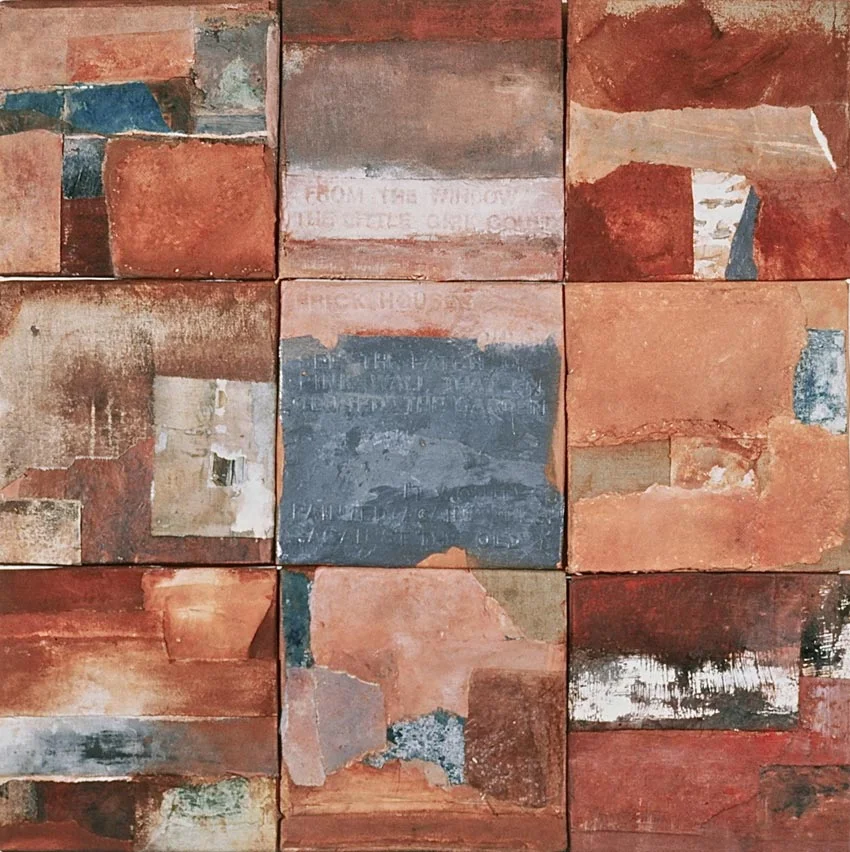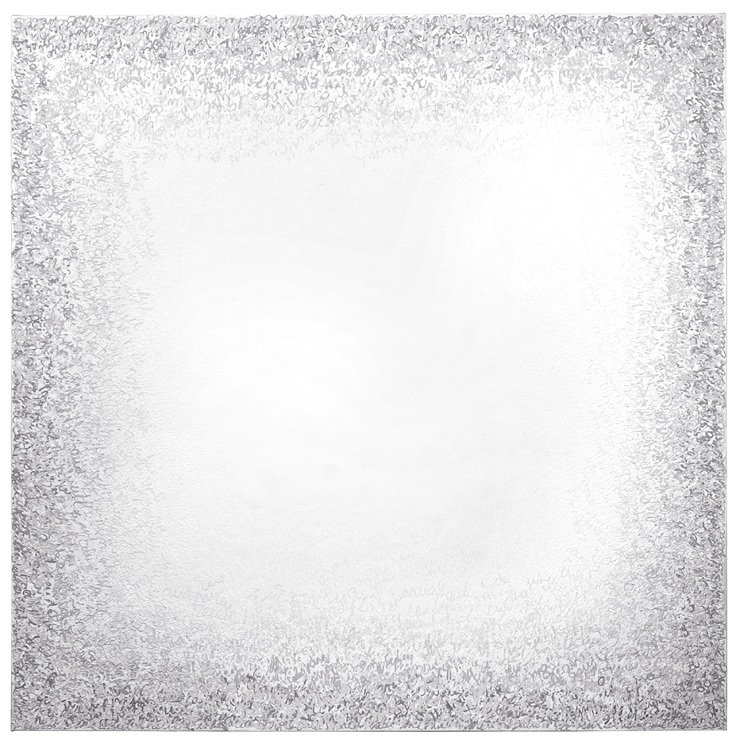Born in Brussels, Belgium in 1934, Anne Slaughter grew up in the shadow of World War II. As a seven year old in 1942, Anne and her younger brother escaped with their mother to safety in England, there joining their father, Dr. Jean Limbosch. She would return and be educated at the University Libre de Bruxelles. Those early dark days of war however, would leave their permanent imprint.

In 1957, Slaughter came to live in Charlottesville, Virginia, her husband’s hometown. They’d met while he was studying in Belgium. She worked as a sociologist at the University hospital while her husband was in law school. In the early 60’s when her son and daughter were young, Slaughter studied art at UVA, especially benefiting from the studio art classes of professors Robert Barbee and Jim Hagan. She was also strongly influenced by the Russian-French artist Nicolas de Stael known for his abstract landscapes and thick “impasto” painting technique.

Slaughter began painting at home, landscapes inspired by the Virginia Piedmont as well as the infinite lands and seascapes of her childhood. “Anchored in the beauty of the natural world,” she says, “I very early began to form my own vocabulary of semi abstractness and textural surfaces, reducing a landscape to its essence of form and color at a particular moment in time.”
Slaughter moved from her basement studio to the McGuffey Arts Center as a founding member in 1975. The move would be a crucial turning point, one in which she would become a professional artist and fully pursue her own creative vision.
In the late 80’s exploring beyond her initial landscapes, she veered from realism to the more mysterious and less representational. “I found that I wanted to express the concepts of the physical passage of time evident in the transformative layering and erosion by the elements in nature and on human objects and structures, but also the emotional passage of time in the layers of our collective and individual memories,” Slaughter says.
In Vestiges, Memory of Walls, Lost Writings and other series, Slaughter ultimately created works in a variety of semi-abstract mediums—mixed media paintings, sculptures, prints and works on paper. She used acrylic paint, archival papers and fibers, wood, metal, ink and wax.
“Working intuitively, I layer, transform, scrape and burnish these materials in evocative abstractions and organic textured surfaces,” she says. “The challenge is to achieve a certain beauty and harmony in the work and yet convey strength and emotional power through this unity of concept and process.”

In 1998, The Washington Post art critic reviewing Anne Slaughter’s paintings at the Troyer, Fitzpatrick and Lassman Gallery noted:
“The central theme running through all Slaughter’s works in recent years is the erosive power of time, how it inexorably wears down the natural world and renders people physically, mentally and emotionally indistinct.”


“…the single most powerful piece is a sculptural installation titled “Portal of Memories #1…” From the apex of the doorway, Slaughter has hung a bunch of letters in her native French…the letters function like bits of sand passing through an hourglass. Their significance and context are steadily eroding…There is something overwhelmingly honest in the sculptural installation and a terrible simple beauty.”
In 2006, Slaughter’s prolific works were featured in a retrospective, Terra Incognita: Anne Slaughter, 40 Years at Charlottesville’s Second Gallery and Les Yeux de Monde Gallery.
Second Street Gallery director Leah Stoddard observed in the exhibition catalogue: “…all [Slaughter’s work] touch upon the themes constant in her art: the passage of time, the love of the natural world and her desire to evoke profound feeling through evident process and surface materiality.”

To evoke such feelings, Stoddard noted that Slaughter was willing to take risks: “It’s very hard I think as an artist to experiment and try new directions. She [Slaughter] is not afraid to try something new, revisit something she has done before or even try new materials.”
Lyn Bolen Warren, owner and director of Les Yeux du Monde Gallery agreed, “Although she [Slaughter] has followed an inner voice throughout her artistic career, using it to respond to events and emotions in her own life, the works reverberate in others’ lives because they evoke human emotions, losses and memories that transcend the particular and are more about the history of our own time.”

Also in 2006, Slaughter’s work Lost Writings #15, created in 2001, was chosen as part of the permanent collection of UVA’s Fralin Museum of Art. “Anne Slaughter is a distinguished artist whose work has an international dimension and is invested in materiality,” says Bruce Boucher, Director of the Fralin Museum. Lost Writings #15 is distinctive in its combination of lead, acrylic, and mylar on canvas. It is reminiscent of works by the German artist Anselm Kiefer who incorporates materials such as straw, clay and lead as well as collage. Boucher notes that Kiefer and Slaughter are of the same generation and their work reflect the war, growing up after the war and themes of disruption and preservation. Lost Writings is a strong work, and we are interested in collecting the best of contemporary art from here and across the globe.”

Now 78, Slaughter continues to produce challenging works that summon loss, impermanence and weathered beauty while posing questions on the nature of reality and art itself. She’s working on a new series of painting furthering her continuing interest in landscape, memory and the power of silence. For the first time, Slaughter is exploring the inclusion and relationships of human figures into her work. Her latest work will be shown at Les Yeux du Monde Gallery in October 2014. She hopes to write a book on her still-present recollections of escaping Belgium during her World War II childhood.

And Slaughter looks ahead, perhaps considering her legacy as well as the now famous thesis of her daughter Anne Marie. A Princeton professor of International Relations and Foreign Policy, Anne Marie Slaughter published her controversial claim Why Women Still Can’t Have It All in 2012 in The Atlantic. Anne Marie’s artist mother knows something of juggling the raising of children and the tug of one’s own creative career. “Working at my art, with all that it encompasses is what centers me in a life of many parts. My family, my friends, our house, the pleasure of gardening and many other occupations, all are part of me and also need nurturing. It is a constant balancing act, just as I seek balance and harmony making a painting. The work then ‘holds together’ and I can let it go. But it (balance) is not easy to obtain.”
To view more of Slaughter’s work, visit her website: www.anneslaughter.com
–Elizabeth Howard, Art Editor
Follow us!Share this post with your friends.
